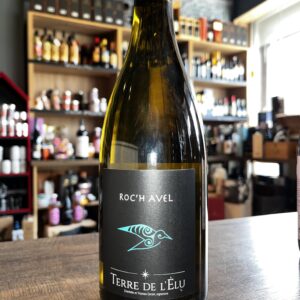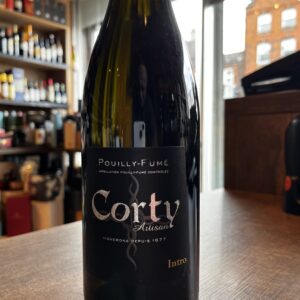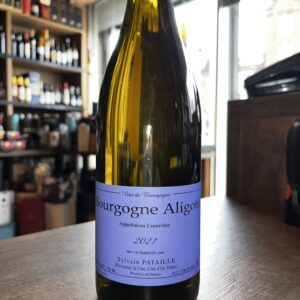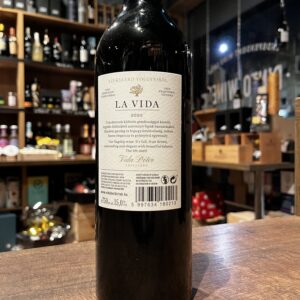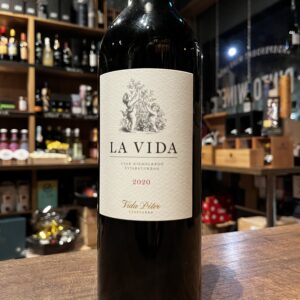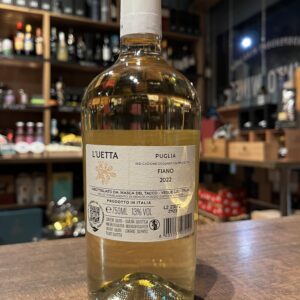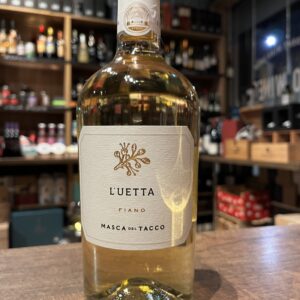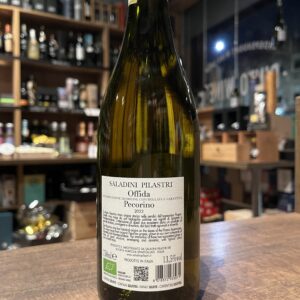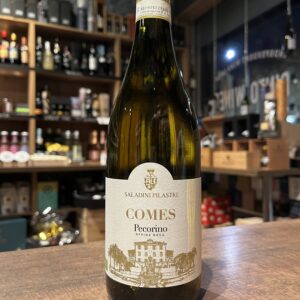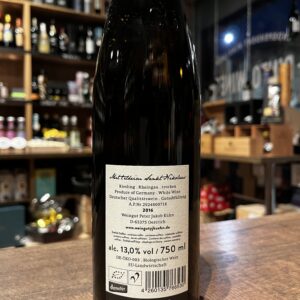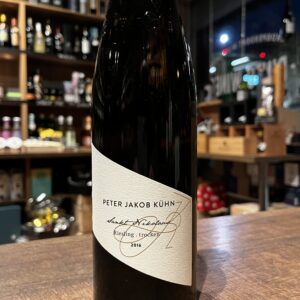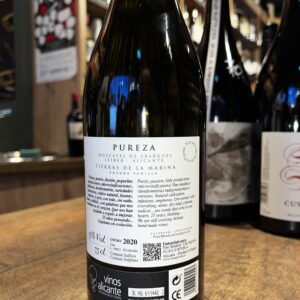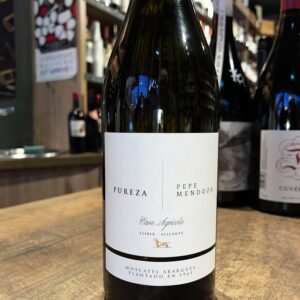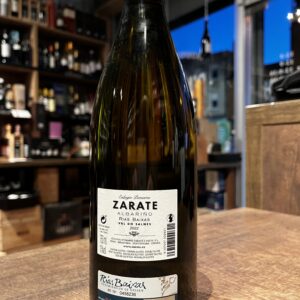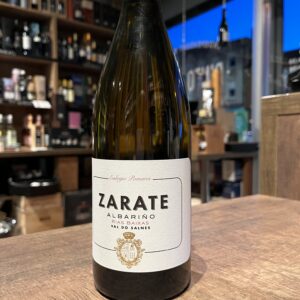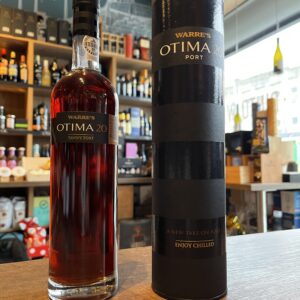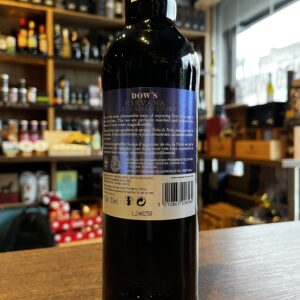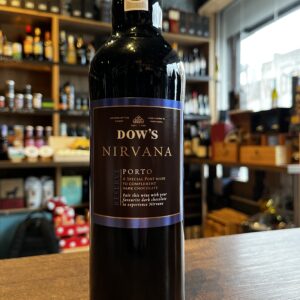-
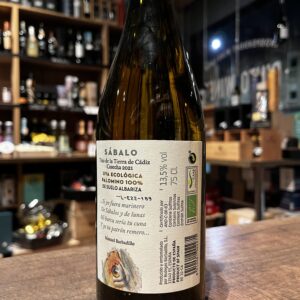
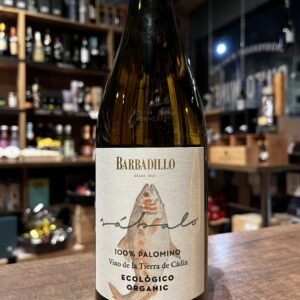 Sábalo is produced from 100% ecological Palomino Fino grapes and it is a spectacular wine, the true fruit of our many years of expertise. The grapes used to produce this wine are harvested in the white albariza soils of Sanlúcar, and as such the sea, the marshlands and the Guadalquivir River all form part of what is essentially Sábalo’s DNA.
Sábalo is produced from 100% ecological Palomino Fino grapes and it is a spectacular wine, the true fruit of our many years of expertise. The grapes used to produce this wine are harvested in the white albariza soils of Sanlúcar, and as such the sea, the marshlands and the Guadalquivir River all form part of what is essentially Sábalo’s DNA. -
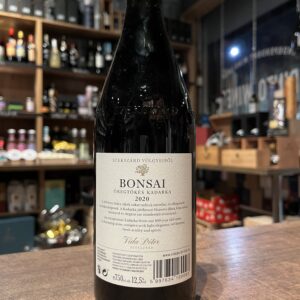
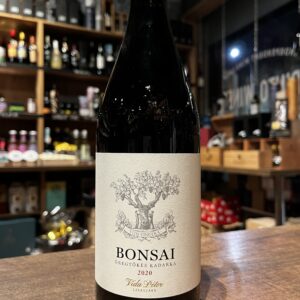 An exceptional Kadarka from the Vida winery's 100 year old vines. The history of the name for this wine is also peculiar. One day, Peter Sr. was presenting his winery to one of his Japanese partners. When they were about to approach the vineyards, the gentleman noticed this little vine and jumped off the car and started shouting “BONSAI!” pointing at them. The tiny appearance of these stocks resembles a Bonsai, which in Japanese culture represents wisdom, a wish for long life and is also a symbol of good luck. A small curiosity is that Kadarka is a grape that was widely available before the Soviet union and well praised. With the Iron Curtain nearly fell into extinction, it's delicious but takes a huge effort to grow and is best from old vines. Reminds you of any other grape with certain similarities?
An exceptional Kadarka from the Vida winery's 100 year old vines. The history of the name for this wine is also peculiar. One day, Peter Sr. was presenting his winery to one of his Japanese partners. When they were about to approach the vineyards, the gentleman noticed this little vine and jumped off the car and started shouting “BONSAI!” pointing at them. The tiny appearance of these stocks resembles a Bonsai, which in Japanese culture represents wisdom, a wish for long life and is also a symbol of good luck. A small curiosity is that Kadarka is a grape that was widely available before the Soviet union and well praised. With the Iron Curtain nearly fell into extinction, it's delicious but takes a huge effort to grow and is best from old vines. Reminds you of any other grape with certain similarities? -
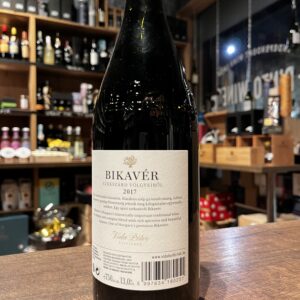
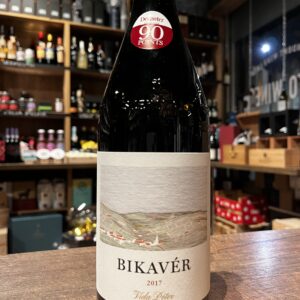 Bikaver is a Hungarian blend based on Kékfrankos and Kadarka. The two local grapes must together make up at least 50% of the blend, while oak should be used sparingly. Szekszárdi Bikavér is generally medium ruby in colour with pronounced fruit and spice, vibrant acidity and silky, velvety tannins. Its aromatics are characterised by spice, paprika, mint, hibiscus and rosemary as well as red berry fruit, cherry, raspberry and plum. Kékfrankos provides the blend’s backbone, freshness, acidity and pronounced yet silky tannins. While Kadarka is responsible for its floral, spicy notes, which add bewitching lightness to the wine. Of course, as always, much depends on the winemaker’s style too, but what is certain is that Szekszárdi Bikavér is a truly appealing, elegant wine, which speaks of the place of origin.
Bikaver is a Hungarian blend based on Kékfrankos and Kadarka. The two local grapes must together make up at least 50% of the blend, while oak should be used sparingly. Szekszárdi Bikavér is generally medium ruby in colour with pronounced fruit and spice, vibrant acidity and silky, velvety tannins. Its aromatics are characterised by spice, paprika, mint, hibiscus and rosemary as well as red berry fruit, cherry, raspberry and plum. Kékfrankos provides the blend’s backbone, freshness, acidity and pronounced yet silky tannins. While Kadarka is responsible for its floral, spicy notes, which add bewitching lightness to the wine. Of course, as always, much depends on the winemaker’s style too, but what is certain is that Szekszárdi Bikavér is a truly appealing, elegant wine, which speaks of the place of origin. -
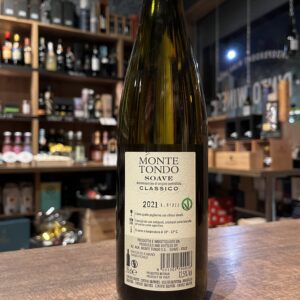
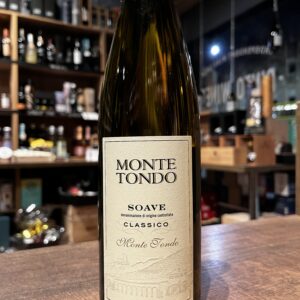
Monte Tondo is a family estate located in the beautiful hillside vineyards of Soave. Here the soils range from volcanic to chalky, which alongside the varying microclimates, gives the wines distinct flavour characteristics and individualistic style.
Alongside his family, winemaker Gino Magnabosco is part of the third generation to run the estate. They believe that hard work, drive, and determination are key to obtaining the best results from their land. Maintaining, nourishing, and cherishing the land of their ancestors is of utmost importance. And although not certified, they farm using organic practices and an environmentally friendly approach to both viticulture and vinification. No chemicals are used in their production and they recycle everything excess coming from the vineyard (stems as fertilizers, skins for grappa, pruned branches for heating and fertilizer).
Small proportions of other varieties are allowed in the production of Soave, but Monte Tondo focus their concentration purely on Garganega. Garganega is a variety so versatile and easily culinary matched but also with the ability to produce complex wines with age-ability.
A very good example of Soave at a very good price. This over-delivers.. Perfect with salads and light fish and shellfish dishes.
-
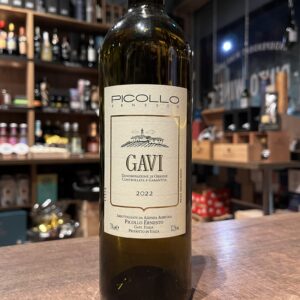 Picollo Gavi Ernesto is perched among the rolling hills that surround the town of Gavi. The climate here is much more mediterranean than in the north, benefiting from the constant maritime breezes, unique to the southern Piedmont. Picollo Ernesto’s vineyards sit near 260 meters above sea level in Rovereto di Gavi, one of the most prestigious area of the appellation. Our 16 hectares of vineyards are planted exclusively with Cortese, a hearty, high acid white varietal, perfectly suited for this area in northern Italy. Cortese thrives in difficult soil, dry climate, and full sun exposure, which Rovereto amply provides. Picollo’s vineyards are predominantly south-facing and the soils have a higher concentration of clay than marl, which allows for year-round water conservation, even in the peak of summer. Lorenzo Picollo founded the winery in 1945. The winemaking and day-to-day management was transferred to his son, Ernesto, and is now in the hands of his grandson, Gianlorenzo. Innovating along the way, Gianlorenzo continues to carry the family’s legacy forward with great success. Their lands are predominantly in the Rovereto zone, the historic Le Rive vineyards are over sixty years old instead their newest purchase of two hectares lies within the zone of Tassarolo. The grapes for all of Picollo’s wines are hand harvested. The winery itself has recently been modernized but the processes remain traditional, with sparing intervention in the winemaking and no artificial pesticides or herbicides used in the vineyards. With the intent of showcasing the Cortese in its purest form. All Gavi’s are fermented and aged exclusively in stainless steel. It is perfect with haute cuisine, ideal for fish dishes and aperitif
Picollo Gavi Ernesto is perched among the rolling hills that surround the town of Gavi. The climate here is much more mediterranean than in the north, benefiting from the constant maritime breezes, unique to the southern Piedmont. Picollo Ernesto’s vineyards sit near 260 meters above sea level in Rovereto di Gavi, one of the most prestigious area of the appellation. Our 16 hectares of vineyards are planted exclusively with Cortese, a hearty, high acid white varietal, perfectly suited for this area in northern Italy. Cortese thrives in difficult soil, dry climate, and full sun exposure, which Rovereto amply provides. Picollo’s vineyards are predominantly south-facing and the soils have a higher concentration of clay than marl, which allows for year-round water conservation, even in the peak of summer. Lorenzo Picollo founded the winery in 1945. The winemaking and day-to-day management was transferred to his son, Ernesto, and is now in the hands of his grandson, Gianlorenzo. Innovating along the way, Gianlorenzo continues to carry the family’s legacy forward with great success. Their lands are predominantly in the Rovereto zone, the historic Le Rive vineyards are over sixty years old instead their newest purchase of two hectares lies within the zone of Tassarolo. The grapes for all of Picollo’s wines are hand harvested. The winery itself has recently been modernized but the processes remain traditional, with sparing intervention in the winemaking and no artificial pesticides or herbicides used in the vineyards. With the intent of showcasing the Cortese in its purest form. All Gavi’s are fermented and aged exclusively in stainless steel. It is perfect with haute cuisine, ideal for fish dishes and aperitif -
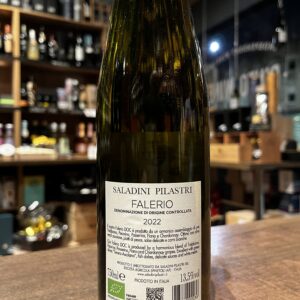
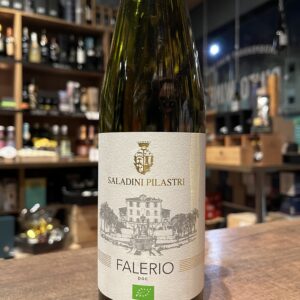 Saladini Pilastri is located in Spinetoli, in the Marche region of Italy . The history of the Counts Saladini Pilastri, a noble family from Ascoli Piceno, dates back to the early 1000s, but it is only for around 300 years that the family has been dedicated to wine production. Its 320 hectare wine estate is located in the heart of the Rosso Piceno production area. From the 1970s, new vines were planted; The current winery was built next to the splendid 15th century country house “Vigna Palazzi”, which originally served as a production site, so that all production could be kept in one place. The vineyard has been certified in organic farming since 1994. The climate here is Mediterranean, with hot, dry summers tempered by the maritime influence of the Adriatic Sea only 8km away from the vineyards. All the farming is organic and the winery is equipped with all the latest wine-making mod cons, helping speeding up the complex time of production and maintain quality. In true Italian style-Great wine with great food it helps that at the heart of the estate is a plush mansion house with a sweet swimming pool!. True quality of life. If I wasn't Portuguese, Italy would be where I would retire. Food-friendly as they come, its easy-going qualities match well with antipasti or even creamy pasta dishes but especially fish orientated dishes. Goditi il Vino!
Saladini Pilastri is located in Spinetoli, in the Marche region of Italy . The history of the Counts Saladini Pilastri, a noble family from Ascoli Piceno, dates back to the early 1000s, but it is only for around 300 years that the family has been dedicated to wine production. Its 320 hectare wine estate is located in the heart of the Rosso Piceno production area. From the 1970s, new vines were planted; The current winery was built next to the splendid 15th century country house “Vigna Palazzi”, which originally served as a production site, so that all production could be kept in one place. The vineyard has been certified in organic farming since 1994. The climate here is Mediterranean, with hot, dry summers tempered by the maritime influence of the Adriatic Sea only 8km away from the vineyards. All the farming is organic and the winery is equipped with all the latest wine-making mod cons, helping speeding up the complex time of production and maintain quality. In true Italian style-Great wine with great food it helps that at the heart of the estate is a plush mansion house with a sweet swimming pool!. True quality of life. If I wasn't Portuguese, Italy would be where I would retire. Food-friendly as they come, its easy-going qualities match well with antipasti or even creamy pasta dishes but especially fish orientated dishes. Goditi il Vino! -
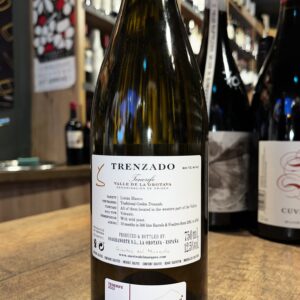
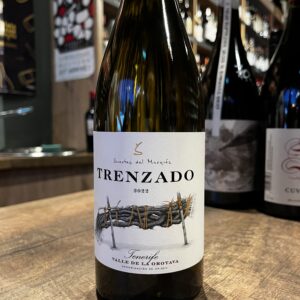 Trenzado takes its name from a local vine training method called Cordon Trenzado, in which the branches of the vine are almost braided together and supported on stakes (as pictured on the label). Tenerife has a long and fascinating winemaking history, indigenous varieties such as Listán Negro and Blanco, Tintilla and Baboso Negro. Many vineyards are made up of 100 year-old+ ungrafted vines. Jonatan Garcia runs the family winery that is located in the Orotava Valley on the north side of the island. Many are grown in a traditional trellising system called Cordon Trenzado - vine branches are braided together and supported on stakes, and eventually grow into gnarly arms sometimes several meters in length. The estate has some incredibly old, low-yielding vines and produce wines that have freshness, balance, purity of fruit, minerality and an authentic terroir character. A beautiful wine, perfect for the seasoned Chardonnay drinker, seeking to try something a different. Pair it with grilled fish dishes, shellfish and crustaceans; also well paired with stewed white meats
Trenzado takes its name from a local vine training method called Cordon Trenzado, in which the branches of the vine are almost braided together and supported on stakes (as pictured on the label). Tenerife has a long and fascinating winemaking history, indigenous varieties such as Listán Negro and Blanco, Tintilla and Baboso Negro. Many vineyards are made up of 100 year-old+ ungrafted vines. Jonatan Garcia runs the family winery that is located in the Orotava Valley on the north side of the island. Many are grown in a traditional trellising system called Cordon Trenzado - vine branches are braided together and supported on stakes, and eventually grow into gnarly arms sometimes several meters in length. The estate has some incredibly old, low-yielding vines and produce wines that have freshness, balance, purity of fruit, minerality and an authentic terroir character. A beautiful wine, perfect for the seasoned Chardonnay drinker, seeking to try something a different. Pair it with grilled fish dishes, shellfish and crustaceans; also well paired with stewed white meats -
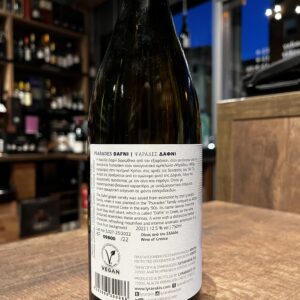
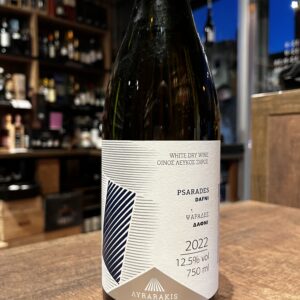 The Dafni grape variety was saved from extiction by the Lyrarakis family, when it was planted in the ''Psarades'' family vineyard at 480m altitude in central Crete in the early 90's. It's name derives from the laurel (bay leaf) plant, which its called ''Dafni'' in Greek, as the wines produced resembles these aromas. Pair with fried small Fish, seafood like cuttlefish with spinach, white meat, pulses and pies with greens and aromatic herbs
The Dafni grape variety was saved from extiction by the Lyrarakis family, when it was planted in the ''Psarades'' family vineyard at 480m altitude in central Crete in the early 90's. It's name derives from the laurel (bay leaf) plant, which its called ''Dafni'' in Greek, as the wines produced resembles these aromas. Pair with fried small Fish, seafood like cuttlefish with spinach, white meat, pulses and pies with greens and aromatic herbs -
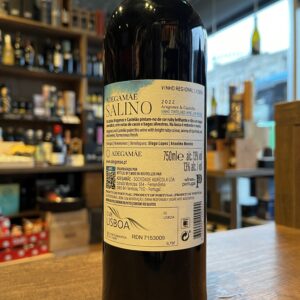
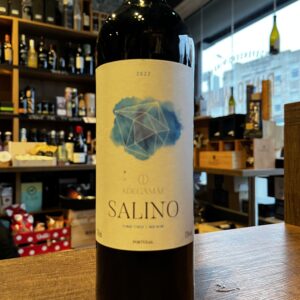 Salino is from north from Lisbon (Torres Vedras) and just a step away from the ocean, AdegaMãe brings out the best of a terroir strongly influenced by the prevailing sea breezes, standing out for its Atlantic-inspired wines, brimming with character, freshness and minerality. The winery was built by the Alves family, founder of Riberalves Group, AdegaMãe is born as a tribute from the men to the family’s matriarch, Manuela Alves. On this particular project, 2 star winemakers were asked to do an everydays wine that brings quality and immediate expression to the palate. Pair it with Charcuterie of all sorts, red meats and stews
Salino is from north from Lisbon (Torres Vedras) and just a step away from the ocean, AdegaMãe brings out the best of a terroir strongly influenced by the prevailing sea breezes, standing out for its Atlantic-inspired wines, brimming with character, freshness and minerality. The winery was built by the Alves family, founder of Riberalves Group, AdegaMãe is born as a tribute from the men to the family’s matriarch, Manuela Alves. On this particular project, 2 star winemakers were asked to do an everydays wine that brings quality and immediate expression to the palate. Pair it with Charcuterie of all sorts, red meats and stews -
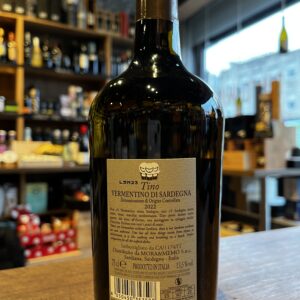
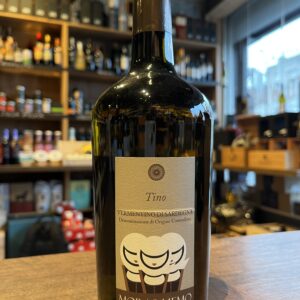 Their Vineyard is located in the south eastern corner of Sardinia in a rolling hill area looking at the sea of the Gulf of Cagliari. Vines with an average age of forty years our vineyards are able to express the best from the terroir of the south Sardinia. A unique terroir with the Sette Fratelli mountains, the tallest ones of the south of the island, just a mile away from the winery, behind them the beatiful beaches overlooking the Thyreenian sea. Pair with seafood in general, fish and delicate meat served with light sauces, soups or pasta.
Their Vineyard is located in the south eastern corner of Sardinia in a rolling hill area looking at the sea of the Gulf of Cagliari. Vines with an average age of forty years our vineyards are able to express the best from the terroir of the south Sardinia. A unique terroir with the Sette Fratelli mountains, the tallest ones of the south of the island, just a mile away from the winery, behind them the beatiful beaches overlooking the Thyreenian sea. Pair with seafood in general, fish and delicate meat served with light sauces, soups or pasta. -
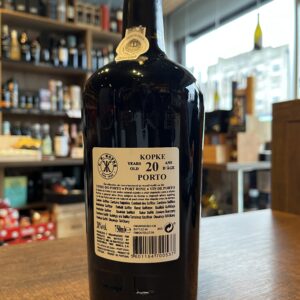
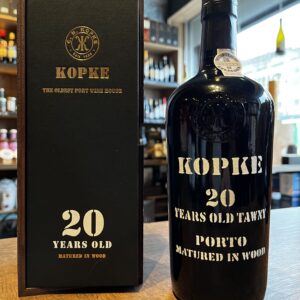 Kopke, a house specialising in aged tawny and aged white ports, is the oldest established port producer, in existence since 1638. There are special places in the world. Kopke found one of them. Quinta de São Luiz is located on the left bank of the river Douro, near Pinhão, in the parish of Tabuaço. It is an imposing estate, considered one of the most emblematic of the Douro region. The Quinta has gone through two major changes: on the one hand, the construction of the Bagaúste dam, with the consequent rise of the water level and the loss of vineyard land; on the other, the enlargement of the total area with the acquisition of several other properties in the area. The estate is made up of 125 hectares, 90 of which are planted with vines. The main grape varieties grown here are Touriga Nacional, Touriga Franca, Tinta Roriz, Tinta Cão. There are also small plots of Tinta Barroca and Souzão. The vines are classified as A, the highest grade in the Demarcated Region of the Douro. Irresistible with a starter of foie gras with aubergine and walnuts. A great choice for an endless array of desserts, such as toffee brownies, chocolate and pistachio pavé, or crostini of walnuts with chèvre. When teh weather picks up or the height of the Summer, serving this Port slightly chilly is a must.
Kopke, a house specialising in aged tawny and aged white ports, is the oldest established port producer, in existence since 1638. There are special places in the world. Kopke found one of them. Quinta de São Luiz is located on the left bank of the river Douro, near Pinhão, in the parish of Tabuaço. It is an imposing estate, considered one of the most emblematic of the Douro region. The Quinta has gone through two major changes: on the one hand, the construction of the Bagaúste dam, with the consequent rise of the water level and the loss of vineyard land; on the other, the enlargement of the total area with the acquisition of several other properties in the area. The estate is made up of 125 hectares, 90 of which are planted with vines. The main grape varieties grown here are Touriga Nacional, Touriga Franca, Tinta Roriz, Tinta Cão. There are also small plots of Tinta Barroca and Souzão. The vines are classified as A, the highest grade in the Demarcated Region of the Douro. Irresistible with a starter of foie gras with aubergine and walnuts. A great choice for an endless array of desserts, such as toffee brownies, chocolate and pistachio pavé, or crostini of walnuts with chèvre. When teh weather picks up or the height of the Summer, serving this Port slightly chilly is a must. -
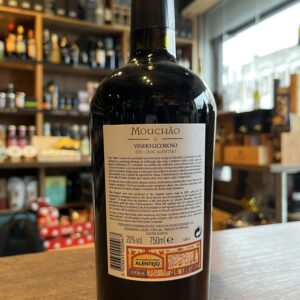
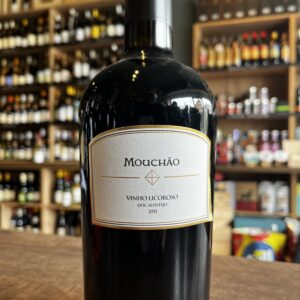 This fortified wine has been produced in Mouchão since the winery was built in 1901. The best grapes from Alicante Bouschet were harvested by hand and trodden by foot in traditional stone presses. The grapes are gently macerated until the fermentation process begins in order to develop a round, subtle and soft mouthfeel. After 120 years, this fortified dessert wine continues to be essential in the homes of Alentejo families at Christmas time. Sold and consumed young, mainly at the beginning of December of the same year of production. Nowadays its popularity is growing outside the festive season and is served in restaurants, very cold after meals. A very traditional and forming part of the tradition of the Northeast Alentejo.
This fortified wine has been produced in Mouchão since the winery was built in 1901. The best grapes from Alicante Bouschet were harvested by hand and trodden by foot in traditional stone presses. The grapes are gently macerated until the fermentation process begins in order to develop a round, subtle and soft mouthfeel. After 120 years, this fortified dessert wine continues to be essential in the homes of Alentejo families at Christmas time. Sold and consumed young, mainly at the beginning of December of the same year of production. Nowadays its popularity is growing outside the festive season and is served in restaurants, very cold after meals. A very traditional and forming part of the tradition of the Northeast Alentejo. -
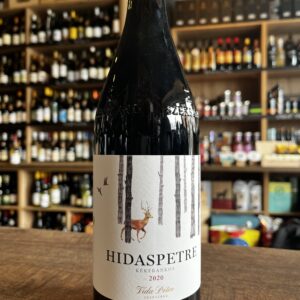 Single vineyard Kekfrankos from Szekszard. The valley of Hidaspetre is surrounded by forest, where the countryside is loud with the singing of birds at dawn. Our vineyard selection is an elegant and beautifully balanced wine with refreshing tannins. Soil: calcareous loess soil with red clay Cultivation method, load: low cordon, 40-50 hl/ha Harvest: September 22-24, 2020
Single vineyard Kekfrankos from Szekszard. The valley of Hidaspetre is surrounded by forest, where the countryside is loud with the singing of birds at dawn. Our vineyard selection is an elegant and beautifully balanced wine with refreshing tannins. Soil: calcareous loess soil with red clay Cultivation method, load: low cordon, 40-50 hl/ha Harvest: September 22-24, 2020


